If you ask pretty much any Australian what animal scares them most, you're probably going to get either snakes or spiders as an answer. While both fears are certainly valid, you're a lot more likely to come across a spider in your home than you are a snake, so we thought it would be a good idea to highlight eight of the most common spiders in Australian homes, and give you some quick facts about their existence, as well as a few tips on identifying them.
8 most common household spiders in Australia (and how to identify them)
Daddy-long-legs spider
Easily identified by their small bodies and elongated limbs, daddy-long-legs spiders are actually the best spider to have in your home. While their webs can be a bit of a bother, they're not dangerous to humans or animals, so your family and pets are safe.
They can also be helpful little housekeepers, as they'll eat any insects or other spiders that they come across, so if you're concerned about finding the others on this list in your home, you may want to think twice about catching the next daddy-long-legs you see or removing his webs.
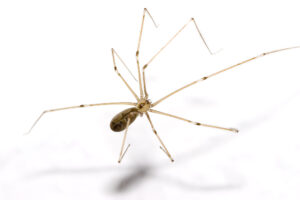
Black house spider
As you'd expect based on the name, these compact spiders are entirely black in colour. Generally rather small, with legs of medium length and prominent fangs, black house spiders are the most common ones you'll come across within your home.
They're not particularly dangerous, but can be hard to tell apart from more dangerous species, so if you or your pet gets bitten by one, it's best to seek medical attention as soon as possible.
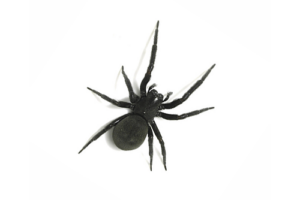
White-tailed spider
One of the most feared spiders you'll possibly come across in your home is a white-tail spider. Known for the signature white tip on their rear, these spiders tend to be dark green to black in general colouring and have a nasty set of fangs.
White-tail bites can be fatal to both humans and animals, so if any member of your family gets bit, you'll need to get to a hospital or vet immediately.
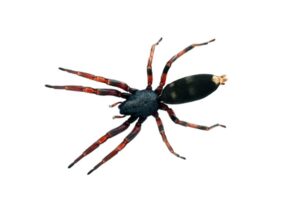
Wolf spider
Big, mean, and furry, wolf spiders are probably one of the most terrifying to come across in your home. Their larger-than-usual size, thick legs and striped bodies can be quite intimidating, and the speed at which they can move is enough to send people running for the hills.
The good news, however, is that even if one bites you, you're probably not going to end up in the hospital. While their bites do certainly cause irritation and pain at the site, they're usually not potent enough to seriously harm humans.
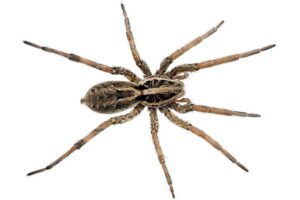
Your pets, however, need to be more careful. While wolf spiders aren't usually aggressive by nature, if your pet decides to play with one, they're probably going to get bit. Because their bodies are so much smaller than a human's, the bite can be fatal, so you'll want to get your pet to a vet as soon as possible.
Funnel-web spider
Large, generally entirely black, and always boasting a serious-looking set of fangs, funnel webs are known as the world's deadliest spider.
They've won this title as their bite can kill a fully grown human in as little as 15 minutes, so these eight-legged creepy crawlies mean business.
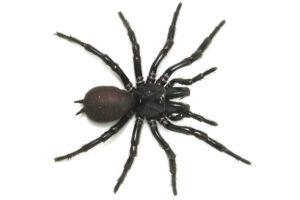
Funnel webs are known for being particularly aggressive, so extra caution should be taken if you spot one, as their bite is highly concerning for both humans and pets.
Huntsman spider
A huntsman looks kind of like a daddy-long-legs who frequents the gym, which can make them quite scary to encounter. Think thicker body, legs that go for days, sizing up to that of a dinner plate and a bit of hair thrown in everywhere just for good measure.
Despite this, however, they're not actually considered to be overly dangerous.
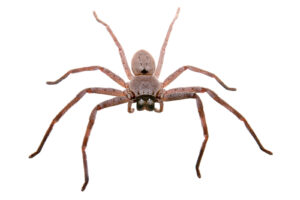
While a bite from a huntsman will definitely hurt, it generally isn't going to cause any serious medical issues for humans or pets. You should, however, still take your pet to a vet to be checked over if you believe they have been bitten.
Jumping spider
As far as spiders go, these little guys are actually kind of cute (and that takes a lot for someone who's arachnophobic to say).
Small and fluffy with a grey or brown general appearance, jumping spiders have eyes that look kind of like jewels if you're bold enough to close enough to see them. They can also be rather colourful depending on the exact type of jumping spider you're encountering but most Aussie ones keep the above-mentioned tones.
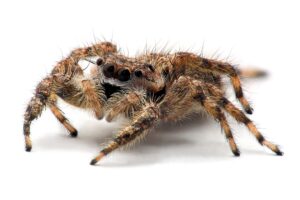
In terms of danger, they're unlikely to cause any serious issues if they bite you or your pet, although if you startle easily, they may turn objects in your home into tripping hazards if you see them bouncing around.
Redback spider
Much like white-tails, redbacks are identified most easily by their rear. The prominent red stripe, bulbous behind and long thin legs let you know you're dealing with something that's not at all friendly.
While most of their bites are usually dry (meaning they're not actually injecting venom) redbacks can kill both people and pets, so if you or your four-legged friend gets bit, it's wise to seek medical attention immediately.
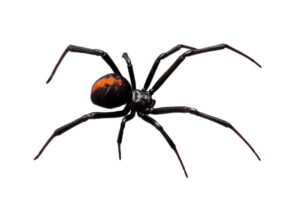
While they're less dangerous to dogs than cats, a vet will still need to at least check your pet over, so please see one as soon as possible.
Australian spiders FAQ
While we're here, we thought it would also be useful to answer some common questions people have about spiders in their homes.
If you're concerned about dying from a spider bite, hopefully this will put your mind at ease—there has been just one death linked to spider bites in Australia since the 1980s.
This death occurred in 2016 after a man was bitten by a redback, however, the bite developed into an infection, which is a factor that must be considered.
The deadliest spider in Australia is the funnel web, but not all varieties are created equal. There are 35 species, with the most concerning being the Sydney funnel-web.
This species is the one that earned the spider the title of deadliest in the world, although all funnel webs should be considered highly dangerous as it's incredibly difficult to tell species apart and all varieties are aggressive in nature.
Spider bites will vary in appearance depending on the type that bit you. All bites, however, will exhibit dual puncture wounds.
Common signs of a spider bite include:
- Swelling
- Weeping
- A change in skin tone ranging from light red to deep purple
- Whiteness around the puncture wounds
It is nearly impossible for an untrained individual to ascertain what type of spider a bite is from, so medical attention should be sought immediately if you notice dual puncture wounds or suspect you have been bitten and are exhibiting any of these symptoms.
Final word
While finding a spider in your home certainly isn't a fun experience, it's highly unlikely to be a deadly situation.
You do need to be more careful if you have pets, and it's definitely still a good idea to remove most species from your home, but if you happen across a daddy-long-legs, it might be a good idea to let him stay.
